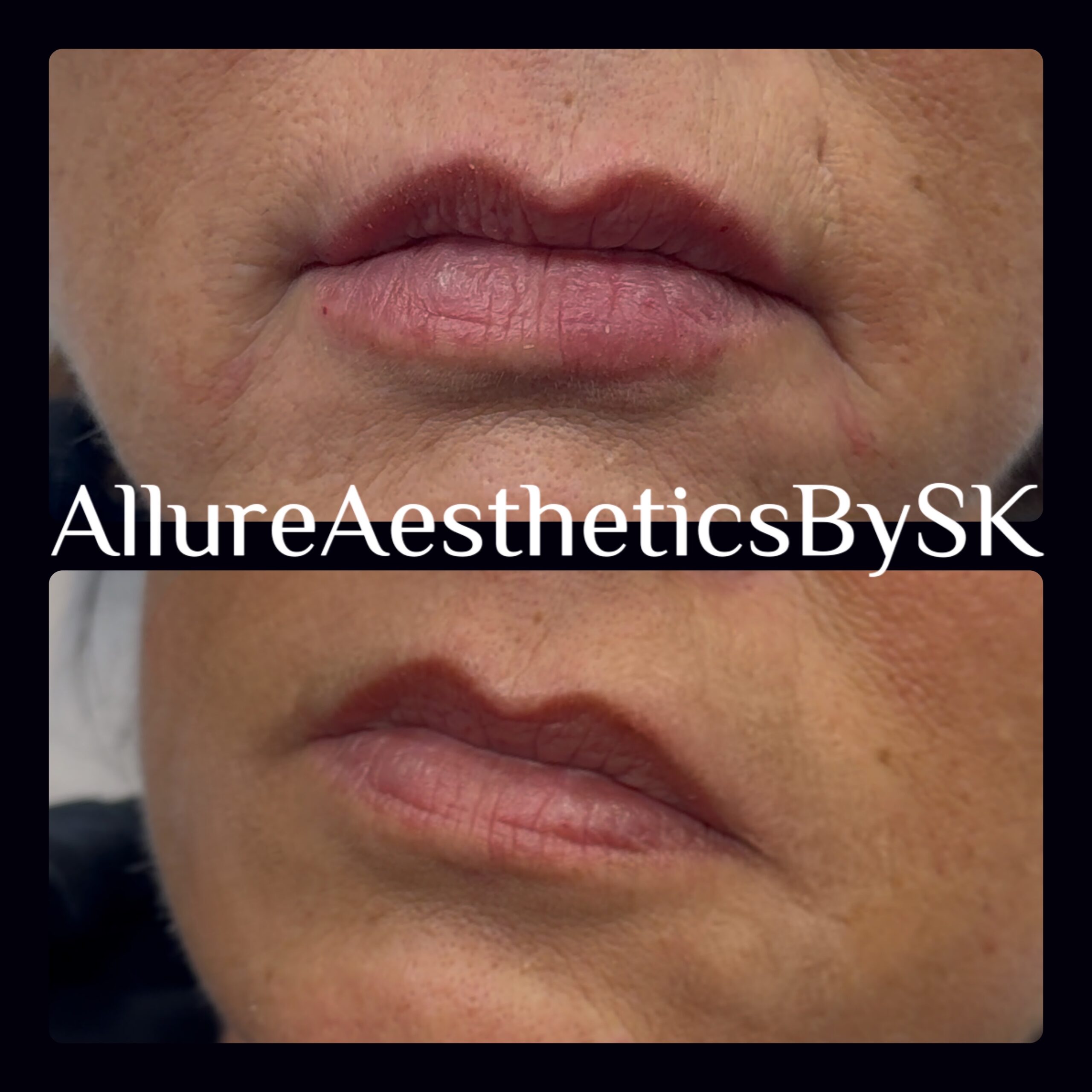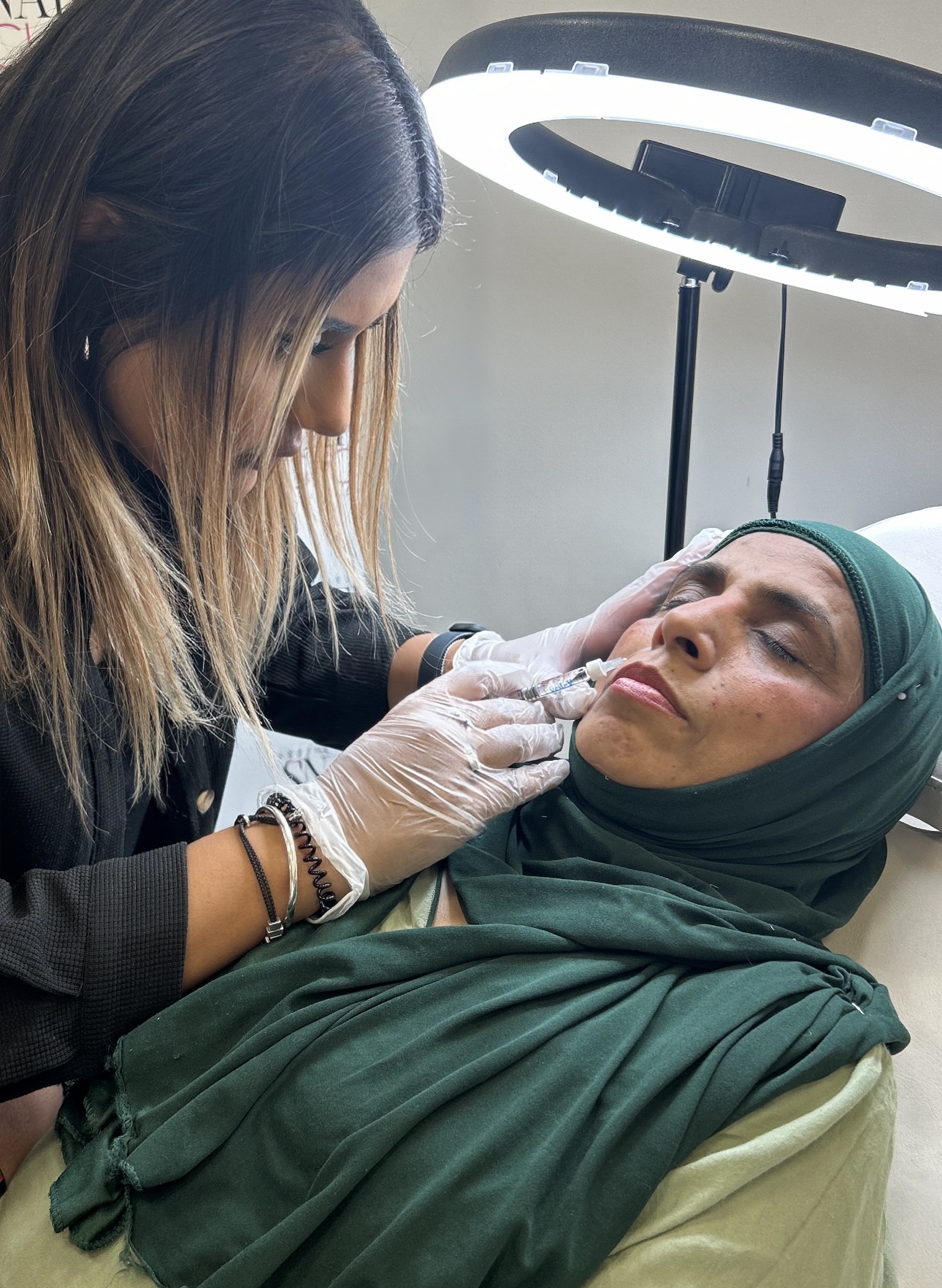Dermal Filler
Dermal Filler


Dermal fillers are injectable treatments designed to restore volume, smooth out wrinkles, and enhance facial features by replenishing the natural substances in your skin that decrease over time, such as collagen and hyaluronic acid. Dermal fillers offer a non-surgical way to enhance facial volume, smooth wrinkles, and rejuvenate your appearance, providing natural-looking results with minimal downtime.
1. Composition:
Dermal fillers are primarily made of hyaluronic acid (HA), a substance naturally found in the skin that helps retain moisture, plumpness, and elasticity. Other fillers may include calcium hydroxyapatite, poly-L-lactic acid, or autologous fat, depending on the treatment area and the results desired.
2. Treatment Areas:
Dermal fillers can be used to treat a variety of concerns, including deep wrinkles (such as nasolabial folds), loss of volume in the cheeks, under-eye hollows, thinning lips, and even contouring the jawline or chin. The filler is injected directly into the skin, beneath the surface, to target the area needing correction.
3. The Procedure:
The process begins with a consultation, where a treatment plan is developed based on your goals. During the procedure, the filler is carefully injected into the targeted areas using a fine needle. Most dermal fillers contain a local anaesthetic (like lidocaine) to minimise discomfort, so the procedure is typically quick and relatively painless. Depending on the area being treated, the procedure can take anywhere from 15 minutes to an hour.
4. Immediate Results:
One of the benefits of dermal fillers is that you can often see results immediately after the treatment. The injected filler adds volume and smooths the skin, giving you a more youthful, refreshed appearance. Any swelling or bruising typically subsides within a few days.
5. Duration of Results:
Dermal fillers provide immediate results, but the longevity of the treatment depends on the type of filler used and the area treated. Generally, fillers last anywhere from 6 months to 2 years, with hyaluronic acid-based fillers usually lasting around 9-12 months. As the body gradually absorbs the filler, you may need touch-up treatments to maintain the results.
6. Post-Treatment Care:
After the procedure, you can usually return to your daily activities, though it’s recommended to avoid excessive heat, direct sun exposure, and strenuous exercise for the first 24-48 hours. Any minor swelling, redness, or bruising should fade within a few days.
The Process of Dermal Fillers
- 1. Consultation: The process begins with an in-depth consultation where we’ll discuss your aesthetic goals, areas of concern, and medical history. This is an important step to ensure dermal fillers are the right choice for you. I will assess your facial structure, skin condition, and any volume loss, and we will determine the best filler options for your needs. During this consultation, I’ll explain how dermal fillers work, the different types of fillers available, and what to expect from the treatment. We’ll also address any questions or concerns you may have, ensuring you feel fully informed and comfortable moving forward.
- 2. Treatment Plan & Preparation: After understanding your goals, I will create a personalized treatment plan, selecting the right type of filler and the appropriate amount needed for each area. Common treatment areas include the cheeks, under-eye hollows, lips, nasolabial folds, and jawline. Before the procedure, I will cleanse your skin and may apply a topical numbing cream to ensure you feel as comfortable as possible during the treatment. Some fillers already contain local anaesthetics (such as lidocaine) to minimise any discomfort.
- 3. The Procedure:Once you’re comfortable, the filler will be carefully injected into the target areas using a fine needle or cannula. Depending on the area being treated, I may use a combination of injections to restore volume and smooth out lines and wrinkles. The process is typically quick, with most sessions taking between 15 minutes to an hour. You may feel a slight pinch or pressure, but any discomfort is generally minimal due to the numbing cream or anaesthetic in the filler.
- 4. Post-Treatment Care: Immediately after the procedure, you may experience mild swelling, redness, or bruising at the injection sites, but these side effects are temporary and usually resolve within a few days. You can typically resume your normal activities right away, though it’s recommended to avoid vigorous exercise, excessive sun exposure, and touching the treated areas for the first 24-48 hours. I will provide you with aftercare instructions to ensure the best possible results and minimise any risk of complications.
- 5. Results & Follow-Up: You’ll notice the results of dermal fillers immediately after the treatment, with enhanced volume and smoother skin. The results will continue to improve over the next few days as any swelling subsides. Depending on the type of filler used, the effects can last anywhere from 6 months to 2 years. To maintain your results, you may need touch-up treatments. I will schedule a follow-up appointment to assess the results and make any adjustments if necessary.
- Dermal fillers offer a non-invasive way to rejuvenate your appearance with minimal downtime, providing natural-looking results that enhance your features and restore youthful volume.
Dermal Filler Aftercare
- After getting dermal fillers, you should take care of the treated area by:
- Avoid strenuous exercise as this can increase blood pressure which will make swelling and bruising worse. Avoid exercise for at least 24 hours after your treatment.
- Avoid alcohol as this can cause inflammation which will increase bruising and make swelling worse. Avoid for at least 24 hours before and after treatment.
- Stay hydrated - Dermal fillers attract water, drink plenty of water to help them work effectively.
- Cool compress - You can apply a cool compress to the area for 10 minutes every hour on the day of the treatment. You can continue to apply a cold compress regularly for the first 24 hours after your treatment.
- Avoid makeup for at least 6 to 24 hours after your treatment.
- Do not touch the treated area until the next day after your treatment, this will minimise risk of infection at the injection site.
- You can apply arnica cream after your treatment to help with bruising. This is available over the counter in pharmacies.
- Avoid spas and saunas for 48 hours.
- Prevent applying pressure to the treatment site - avoid sleeping on your face/cheek for the first night.
- Avoid aspirin and coffee 24 hours before treatment and 24 hours after treatment.
- You must seek medical attention and contact your practitioner if you experience any signs or symptoms of infection after treatment. Symptoms include: red shiny skin, pus, hot to touch and you may have a fever/feel unwell. You must seek emergency medical attention if you experience any severe allergy symptoms after treatment.
Quick Links
Contact
- 07780 694 677
- allureaestheticsbysk@gmail.com
- Kent, London & Bedfordshire
